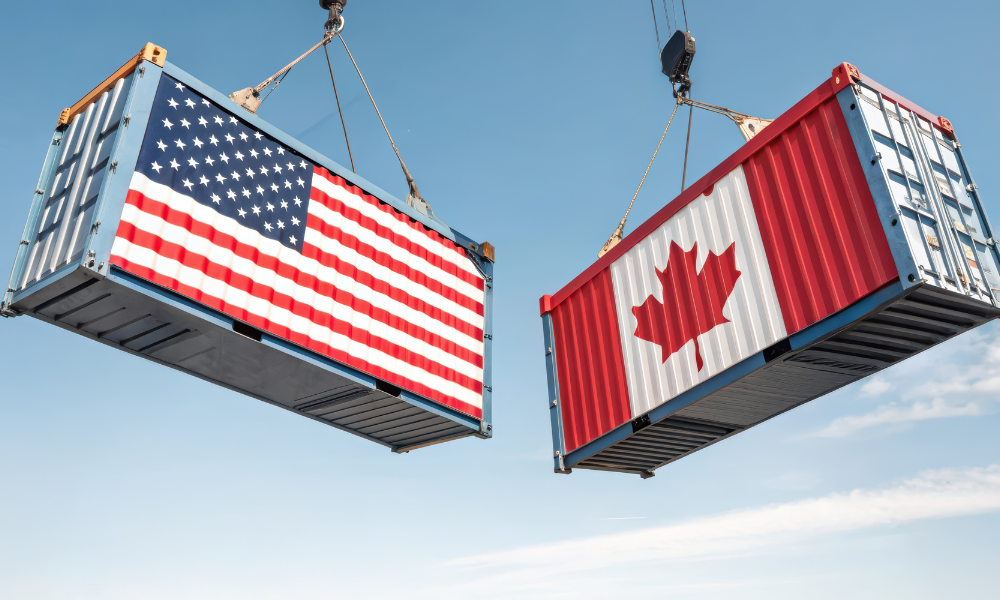
U.S.-Canada Trade War Escalates: 142 U.S. Products Hit with 25% Tariffs in Canada
The trade tensions between the United States and Canada have officially reached a boiling point, as both countries impose hefty tariffs on each other’s goods. Starting today, Canadians can expect to see the cost of numerous everyday items rise as Canada retaliates against U.S. tariffs with its own 25% levy on a wide array of American products. From food staples to electronics, no sector is untouched by these new tariffs, leaving consumers and businesses bracing for what’s to come.
Table of Contents
- What Led to This Trade Conflict?
- The Complete List of U.S. Goods Facing Price Increases in Canada
- How This Will Affect Canadian Consumers
- The Future of the U.S.-Canada Trade Relationship
- What’s Next in This Ongoing Trade Dispute?
1. What Led to This Trade Conflict?
The current trade clash between the U.S. and Canada began when the U.S. imposed 25% tariffs on Canadian exports, excluding energy and certain critical minerals. This aggressive move was quickly met with strong criticism from Canada, including a direct condemnation by Canadian Prime Minister Justin Trudeau. Trudeau stated, “There is no justification for these actions,” signaling Canada’s readiness to take swift action in retaliation.
In response, Canada imposed its own 25% tariffs on $30 billion worth of U.S. goods, with plans to target an additional $125 billion in U.S. products within the next 21 days, unless the U.S. backs down. The conflict is shaping up to be a battle of escalating tariffs, with no clear end in sight.
2. The Complete List of U.S. Goods Facing Price Increases in Canada
Effective March 4, 2025, these are the 142 American products that will see price hikes due to Canada’s 25% tariff on imports. Here’s a comprehensive breakdown:
Food Products
- Poultry: Live chickens, ducks, turkeys, and other fowl.
- Meat: Fresh, chilled, or frozen meats like poultry and pork, including offal (internal organs).
- Dairy: Milk, cream, yogurt, cheese, butter, and other dairy products.
- Eggs: All varieties of eggs.
- Honey: Natural honey from the U.S.
- Fruits & Vegetables: Tomatoes, melons, citrus fruits, apricots, and more.
- Spices and Herbs: Pepper, vanilla, cinnamon, turmeric, curry, saffron, and other spices.
- Oils and Fats: Groundnut oil, palm oil, sunflower oil, margarine, and butter substitutes.
- Sweets: Sugar, chocolate, cocoa, candy, and other confections.
- Beverages: Beer, wine, rum, whiskey, and spirits.
Prepared Foods
- Pizza and Quiche: Ready-to-eat frozen or packaged items.
- Pasta: Spaghetti, macaroni, lasagna, ravioli, gnocchi, etc.
- Baked Goods: Bread, cakes, biscuits, and pastries.
- Sauces: Ketchup, mustard, soy sauce, and other sauces.
- Ice Cream and Syrups: Various frozen desserts and flavoring syrups.
Health and Beauty Products
- Personal Care: Shampoos, soaps, deodorants, shaving products, and oral hygiene items like toothpaste.
- Cosmetics: Beauty and makeup products.
Electronics and Appliances
- Home Appliances: Refrigerators, dishwashers, and vacuum cleaners.
- Small Appliances: Coffee makers, bread makers, irons, and toasters.
- Electronics: Video game consoles, cameras, and other consumer electronics.
Furniture and Household Goods
- Furniture: Chairs, office desks, sofas, beds, and mattresses.
- Textiles: Blankets, rugs, bed linens, and kitchen towels.
- Lighting: Chandeliers, desk lamps, and ceiling lights.
Other Goods
- Tobacco Products: Cigarettes, cigars, and other tobacco items.
- Luggage: Trunks, suitcases, and handbags.
- Sporting Goods: Firearms, motorcycles, and sporting equipment.
- Building Materials: Wood, bamboo, and particleboard for construction.
These tariffs will directly impact both consumers and businesses across Canada, with the ripple effect likely causing price hikes on a wide range of items—from groceries to luxury goods.
3. How This Will Affect Canadian Consumers
The new tariffs mean Canadians will feel the pinch when purchasing many U.S.-made products. Expect higher prices at the grocery store for items like peanut butter, cheese, and beer. Restaurants may also face increased costs for ingredients sourced from the U.S., and some have already begun removing American items from their menus.
Beyond food and drink, the cost of household goods, clothing, personal care items, and even electronics will rise as businesses pass on these increased import costs to consumers. Retailers are already scrambling to find alternative sources, whether domestically or from other countries, to avoid passing on the full price hike to their customers.
4. The Future of the U.S.-Canada Trade Relationship
As both countries dig in their heels, the future of the U.S.-Canada trade relationship looks uncertain. Canada has made it clear that it will not back down from defending its economic interests. However, as these tariffs continue to hurt both economies, especially those reliant on cross-border trade, the pressure to reach a resolution will grow.
Could these tariffs spark negotiations? Will the two countries come to a new trade agreement? It remains to be seen. The longer this conflict lasts, the more pressure will be placed on both governments to find a middle ground.
5. What’s Next in This Ongoing Trade Dispute?
As of now, the ball is in the U.S. court. Canada’s retaliation measures, including a planned additional $125 billion in tariffs, will come into effect unless the U.S. takes steps to de-escalate the situation. Could this lead to further tariffs on even more products? Or will we see diplomatic negotiations aimed at reversing some of these trade restrictions?
Both sides are watching closely. While the tariff war has undoubtedly led to a difficult economic environment, the possibility for change remains, depending on how the U.S. chooses to respond. Until then, Canadians should expect higher prices and potential disruptions in their everyday purchases.
The ongoing trade war between the U.S. and Canada is far from over, and consumers across Canada will need to prepare for the continued impact of these tariffs. Whether this escalates into a larger trade conflict or ends in a new agreement will be closely watched by both governments and businesses on both sides of the border. For now, Canadians may have to make adjustments in their spending habits as they face higher prices on many common products.
For a consultation about Immigration options, reach out to the CAD IMMIGRATION today!





